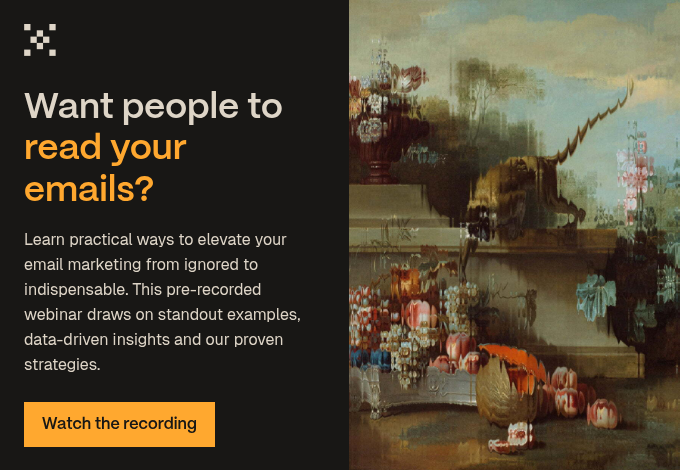‘I don’t believe in email. I’m an old-fashioned girl. I prefer calling and hanging up.’
Carrie Bradshaw, Sex and the City
Believe it or not, email is still a vital part of any business’ marketing. Not to be over-dramatic, but if you’re not email marketing, you’re not marketing properly.
Although on the surface it may seem intrusive, email marketing is very effective. Indeed, email is the third most influential source of information for B2B audiences, behind colleague recommendations and industry thought leaders. It is one of the most effective ways for a marketing team to nurture leads and qualify them for your sales people.
What’s more, email marketing has an average ROI of 3,800 percent.
According to Salesforce, for every dollar invested in email, the average return is $38. This is why email should be part of any B2B marketing strategy. It’s also why you need to ensure your emails are well-written.
A survey by Information Mapping Inc found that 34 percent of respondents wasted between 30 and 60 minutes a day reading badly written emails.
Typical failings included:
- Recipient is not clear as to what should be done or how to act on the information.
- Content is disorganised.
- Critical information is missing or hard to find.
- Content is too long, wordy and difficult to read.
Here are our top tips for writing better B2B emails:
1. Use a clear, strong subject line
Not only will this help recipients prioritise their inboxes, but it provides a hook to your target market. Think of the subject line as the bait you use to reel customers in.
2. Don’t automatically use the important flag
We used to have a client who flagged all her messages as important. As a result, we didn’t know what was actually important to them and what could wait. She obviously hadn’t read the story of the boy who cried wolf.
3. If necessary, change the subject line
If the subject of an email chain has changed, select a new subject line. This helps all involved know exactly what they’re talking about. You can ensure continuity by putting the old subject line in brackets after the new one.
4. Imagine you are paying by the word
Emails are different than letters, they are more concise. Don’t give the background, history and life story of your company. Stick to the relevant facts and requests. If your potential customers want more information, they’ll ask for it.
5. Be direct
When writing, use strong, active verbs. Avoid jargon and abbreviations and keep your word count to a minimum. This is especially important for press releases.
6. Punctuate well
Punctuation exists to make it easier for people to make sense of what they’re reading. Emails that look like an E.E. Cummings poem with no punctuation, bad spelling and inappropriate capitalisation slow down people’s brains when they read. It also makes it harder for them to understand what you are trying to market.
7. Use short paragraphs
Keep it to one or two sentences per paragraph. This isn’t a college essay after all. Be succinct. People will skip the middle of a long paragraph. Using bullets to separate out lists is also helpful.
8. Deal with separate subjects in separate emails
People have bad email reading habits, so a long email with tens things in it will get the same amount of attention as a short one with one topic. So, send short emails instead. Recipients can deal with them immediately and you won’t have to wait until they have an answer for everything before they reply.
This technique also allows people to read your emails more easily on their phone, tablet or other devices.
9. Separate sections in longer emails
If a long email is unavoidable, use subtitles to break the email into sections like a magazine article.
10. End on a high
End your email strong. Tell people exactly what you expect them to do as a result of the email. You can even highlight action items with colour or with capitalisation.
11. Wait a minute
Don’t send an email off the moment you’ve finished writing it. In fact, we generally don’t write the names of the recipients until we’ve finished the email to stop ourselves accidentally sending it.
12. Proofread and re-read it aloud
Proofread your emails. Think about whether you can express any point more clearly and succinctly. Check in with yourself to make sure you’re not going to piss anyone off by sending the email (when you’re in a hurry, it’s easy to write something you’ll regret later).
13. Check recipient names
Use people’s surnames or full names for addresses. You may know lots of Steves, but they probably have different surnames. This will stop you accidentally sending the email to the wrong person.
Alternatively, if you have two very similar names, alter the contact data to avoid sending an email to the wrong person.
14. Don’t be afraid of punctuation and emoticons
Email is an impersonal medium. Expressing your state of mind can helped people understand your words. A New Yorker article, the Element of E-Style, supports this view. Based on research into the way people read emails, the authors come out in favour of:
- Exclamation points. ‘Thanks!’ Is way friendlier than ‘Thanks’.
- Abbreviations. Is ‘LOL’ any more opaque than ‘FYI’?
- Emoticons. They may annoy some people, but they make us smile. 😊
It’s not just what you say, it’s how you say it
As Marshall McLuhan said, ‘The medium is the message’. It doesn’t matter how great your offer is, if your writing is subpar, you will not achieve the true lead nurturing potential that email marketing can offer your B2B business.
We hope you’ve found this list of top tips for better B2B email writing useful. If you follow the advice above, we’re confident you’ll get stellar results (and if you don’t, send us an email at noreply@sorry-not-in.com).
And, if you have neither the time nor inclination to dive this deep, why not get in touch today to find out how Articulate help you supercharge your lead nurturing efforts.

 Posted by
Paul Morton
Posted by
Paul Morton



-1.jpg?width=400&height=250&name=europeana-KG61l7RNWBs-unsplash%201%20(1)-1.jpg)


